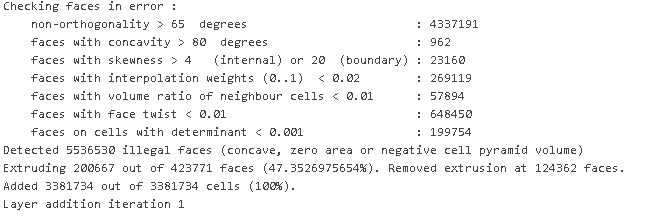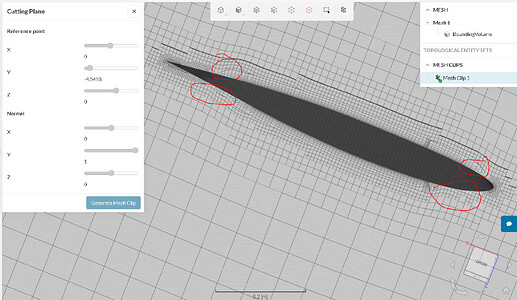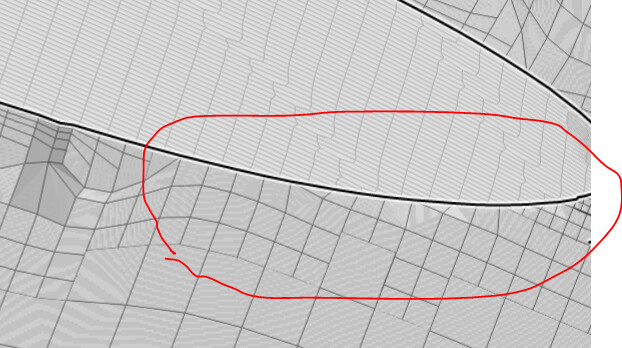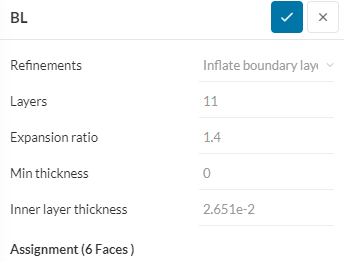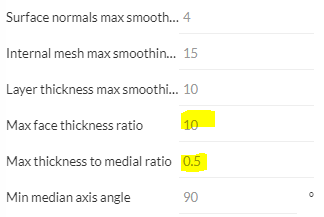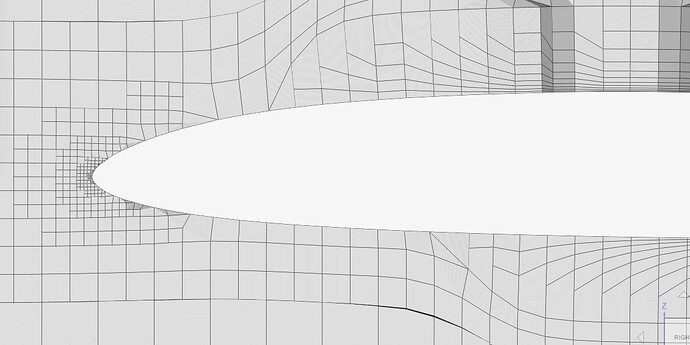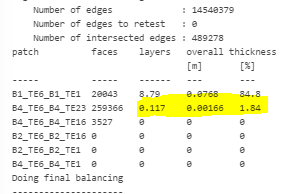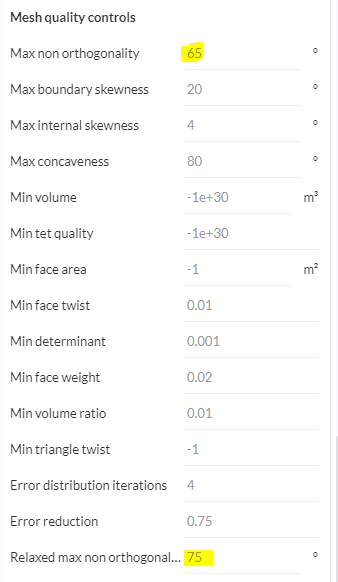Hey! @23ax0762 your mesh is looking a lot better.
Boundary layers can be quite annoying i know. From your last post i had asked if you were going to try and simulate for viscous sub-layer or log law. Why for such a high speed aircraft are you choosing log-law? are you doing a stall angle study?
If you are using 11 layers for the boundary layer anyways you could try to to get your Y+ under 1 and get more accurate data as its more tailored for shear force measurement.
As for the BL inflation problem there are a couple of things i noticed that could or could not be one of the problems.
Normally i stick close to the default range for mesh settings, unless ive done a study of their effects. So these three could be causing some problems (maybe). So try these at default.
I think a big part of the layer deflation is the your surface refinement on the wing, Since you are using absolute layering, and 11 layers, the inflation has to push the HEX cells very far away from the geometry surface and with such small cells at the leading and trailing edges, its causing them to distort so much they become illegal.
To compensate the mesh will delete these layers so that the mesh will actually mesh. So try :
-
make a smaller jump in cells for you surface refinement level difference. so in stead of 5 to 9, try 7 to 8 or 7 to 9. You might have noticed that the fuselage had full layering with a 4-5 level selection.
-
You dont need 11 layers to resolve the log-law region. By the 11th layer you are probably way over 300, which isnt so bad as under 30 but can still have negative effects (like causing layer deflation).
Also the layer thickness Section of the mesh log is very informative. Here you have what seems like the fuselage section achieving 8.79 of your target 11. Which is OK but its best to hit your target layer amount.
The wing section is obviously not good with only 0.117 layers of 11 achieved. In general you want the thickness % to be as close to 100% as possible. So 84.8% for the fuselage isnt bad but can be improved.
LASTLY
I am currently working on a big project for BL deletion and i have found that the Max non-orthogonality setting will cause BL deletion. Try setting this Higher first to make sure this isnt effecting results then tighten the quality check after you have all layers inflated.
So try MAX at 75 or 80 and relaxed 5 deg higher at first then when you have layers, reduce the max and relaxed slowly to improve qaulity, then, when the max value is to low and causes layer deflation, go back to the previous setting and you know the lower limit.
Dan
